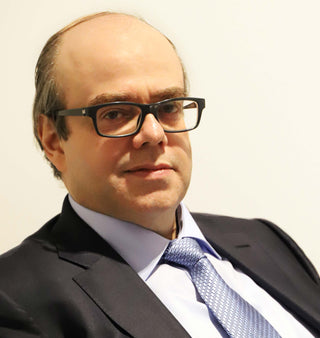Thierry Esslinger has headed the Breguet manufacture as its CEO since September 2017. In an interview with Chronos Editor-in-Chief and Ebner Publishing International Editorial Director Rüdiger Bucher, Esslinger discusses the foreseeable challenges for the company.

What does the strategy look like at Breguet for the near future?
There will be no fundamental changes to the direction of our brand strategy. Breguet will continue to produce tourbillons and ultra-thin watches. We will continue to expand the Marine collection, which was revised in 2017. You will continue to see the typical Breguet aesthetics as expressed through complex guilloché dials, as well as enamel and mother-of-pearl dials. And of course we will be working with silicon technologies within the movements.
As you have just described, this is a brand with a long tradition but doesn’t remain stubbornly locked in the past. You put intensive effort toward working with new technologies. What does that look like in design?
If you look at the history of Breguet, you’ll see a broad range of very different design approaches that go back to the work of Abraham-Louis Breguet. Some of these are timeless designs that still have a modern look today, and they provide a rich source of inspiration for our current developments.

How do you create a balance between historical precedent and the latest requirements?
We have the great fortune of working with Emmanuel Breguet, a direct seventh-generation descendant of Abraham-Louis Breguet. Thanks to his expansive knowledge of Breguet history he is able to advise us on whether the design of a new product is in alignment with the Breguet tradition and its codes. He is a kind of final authority with respect to faithfulness to our history.
What are the greatest challenges you foresee in the next several years?
The most important challenge for Breguet is to ensure that our innovations are successful on the market. That sounds trivial, but especially in the high-end range we can run the risk of pursuing the limits of what is possible. An impressive technical or artistic solution only makes sense if the watch is purchased by a customer. Aside from that, innovation is essential.
What does that mean in concrete terms?
It is critical for us to maintain the power of innovation. It is necessary to have the right structures in place for research and development, and also to be efficient. While it is possible to create demand with technically sophisticated innovations, it’s necessary to listen to the market here, too.

Can you give us an example?
We are currently devoting a lot of effort in the area of escapements and are looking for new avenues, including the use of new materials. For years now we have been working with silicon components and micromagnets in the movement. We use titanium components in our tourbillons. We are not innovative purely for the sake of being innovative, but for the goal of increasing the benefit to the watch customer. And not only for that reason: ultimately, the entire watch sector can profit from many of these developments.
You brought up micromagnets. Isn’t it difficult to interest the watch customer in innovations such as these, which are not visible from the outside?
Breguet customers are particularly interested in technical innovations and they expect them from this brand. But with regard to the “outside,” I don’t really believe in using new materials just for their own sake. Here at Breguet we will be relying more on classical materials. That is a better fit for the brand.

But you have recently been working more with titanium.
Yes, for our new Marine collection. Titanium is interesting due to its high resistance to corrosion, especially in saltwater. We must also consider markets in Southeast Asia where the humidity is generally very high. So titanium is very well suited for the Marine collection. And the use of titanium at Breguet is still rather more the exception [than the rule].
How do you prioritize between grand complications on the one hand and three-hand and entry-level watches on the other?
Complications are very important for the image of the brand. They also fulfill the function of sharpening the brand profile so that all the watches can benefit. It’s why we will continue to dedicate ourselves to the development of watches with several complications.
What can we expect to see with the Type XX?
We have just introduced a limited edition of 111 pieces of the Type XXI in honor of Louis Breguet, who as an aviation pioneer developed the first helicopter 111 years ago. This collection will also be expanded.
